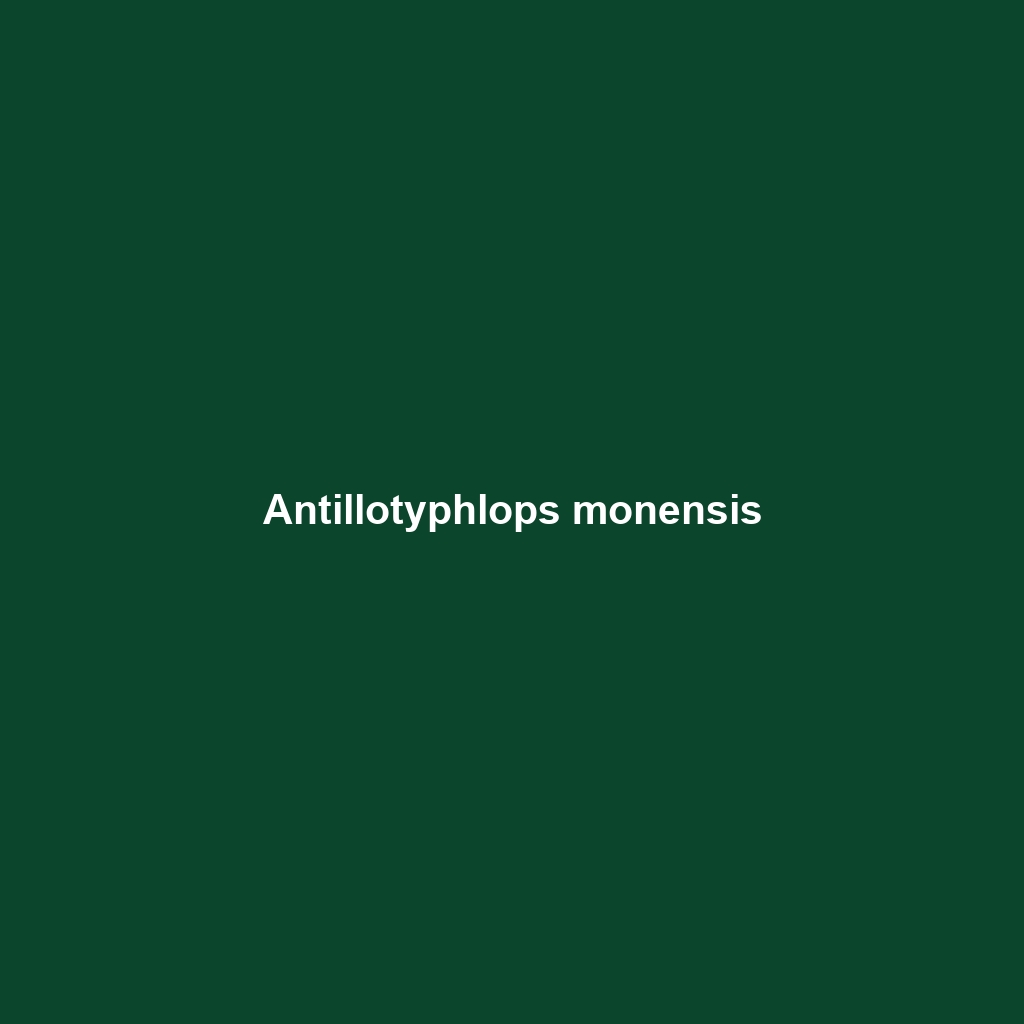Antillotyphlops monensis – Species Overview
Common Name: Antillotyphlops monensis
Scientific Name: Antillotyphlops monensis
Habitat
Antillotyphlops monensis is primarily found in the Caribbean region, particularly on the island of Puerto Rico. This species typically inhabits moist, tropical environments, including forests, grasslands, and agricultural areas. The warm climate and rich soil of these localities provide an ideal habitat for these burrowing snakes.
Physical Characteristics
This species of blind snake is relatively small, averaging around 30 to 50 cm in length. Their bodies are cylindrical and elongated, with smooth, shiny scales that exhibit a coloration ranging from light brown to dark gray. Antillotyphlops monensis is characterized by its absence of limbs, a pointed snout that aids in burrowing, and its distinctively small and vestigial eyes that cater to its subterranean lifestyle.
Behavior
Antillotyphlops monensis is predominantly fossorial, spending most of its life underground. This behavior allows it to escape predation and regulate its body temperature. The snake is primarily nocturnal, venturing out to forage during the night. Its movement is described as slow and deliberate, suitable for navigating through soil and leaf litter with ease.
Diet
The diet of Antillotyphlops monensis primarily consists of small invertebrates, including ants and larvae. This species has developed specific feeding habits that allow it to hunt effectively within its burrowed environment. The snake uses its acute sense of smell to locate prey, often consuming its food in a swallow whole manner, which is common behavior among snakes.
Reproduction
Reproductive activity for Antillotyphlops monensis typically occurs during the warmer months, aligning with the breeding season in its habitat. Females lay eggs, often in moist soil, with clutch sizes averaging between 5 to 10 eggs. Notable behaviors include the mother’s return to the egg site to provide protection until the eggs hatch, ensuring a higher survival rate for the hatchlings.
Conservation Status
As of the latest assessments, Antillotyphlops monensis is classified as a vulnerable species due to habitat destruction and urbanization. Conservation efforts are essential to maintain its habitat and promote species survival in the face of ongoing environmental changes.
Interesting Facts
Antillotyphlops monensis is one of the few species in the Typhlopidae family that exhibits a degree of color variation, likely due to its adaptation to different soil types. Additionally, this snake plays a critical role in controlling insect populations within its ecosystem.
Role in Ecosystem
Antillotyphlops monensis plays a vital role in its ecosystem as a predator. By feeding on various soil-dwelling invertebrates, it helps to maintain population control, thereby contributing to the overall health of the soil ecosystem. Furthermore, as a prey species, it provides a food source for predators within its environment.
